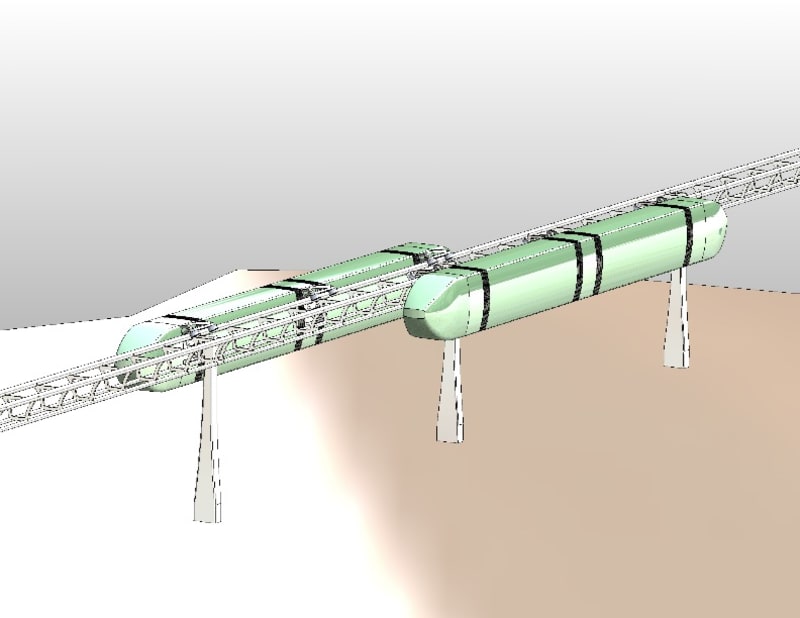Congested urban areas need mass transit the worst and are by far the most difficult to introduce mass transit to. This is do to existing development, high land cost, right-off-way issues, unpopularity of imminent domain, etc.
The elevating of trains and monorails for mass transit are nothing new, however there have been very few successful deployments in the last century. Most of the current light-rail and monorail systems rely on technology that is close to 100 years old; light-rails being nothing more than light(ish) trains, as the name implies, and mono rails are more or less cars on concrete tracks. The problems are trains, even light-rail trains, weight in near 100K-200K lbs, and monorails use large concrete tracks that are heavy, need to be made remotely and are cumbersome to install.
After my last trip to Europe in 2003, I was trying to think of a way to get trains into urban areas without having to deal with imminent domain. Many trolleys and light-rails utilize the streets but this interferes with automotive and pedestrian traffic. So I thought, why can’t we use the streets, but elevate them like they have in Chicago? Only to do it right, it would need to be eco-friendly, efficient, quiet, fast, low maintenance, minimalist in material use, and be inexpensive and easy to install.
The passenger platforms are elevated and double as pedestrian crossings on busy streets without the need to interrupt the flow of automobile traffic. I envision the towers being fitted with solar panels clusters or silent vertical-axis helical wind turbines. The use of recycled materials are a must for any eco-friendly alternative transportation.
Additionally, there has been a trend over the last 20-30 years in America of reclaiming rail beds for use as urban or suburban pedestrian/bike trails. A great use for these strips of lands which can otherwise be a weedy eye sore. The upside is great trails for people to walk, run, bike, rollerblade, etc. The downside is much of the surrounding areas have since been developed, grown substantially and are now in need of mass transportation options. The idea of reutilizing these pedestrian right-of-ways for mass transit in desperately needed areas without interfering with their new found purpose becomes reality.
My TRI-RAIL system is by far the most efficient in terms of material use, energy to build and install, as well as the energy used to operate. Time to install would also be great reduced allowing possibility of night-time installation in areas where daytime traffic disruption would be intolerable. Manufacturing and assembly of this system could be done locally in many cases, creating local jobs. Alternately, portable manufacturing facilities could travel to where the system is being implemented. I have seen similar ideas recently but none that truly compete with mine in being an all-around better option for future mass transit in urban areas.
I believe my idea is a radical departure from traditional thinking, yet completely realistic in terms of technology and execution in today’s world.
Like this entry?
-
About the Entrant
- Name:Steven Dodson
- Type of entry:individual
- Software used for this entry:SolidWorks 2011
- Patent status:none





